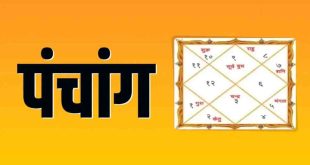 Raksha Sutra Bandhane Ke Niyam: Upholding Tradition and Spirituality in Hinduism
Raksha Sutra Bandhane Ke Niyam: Upholding Tradition and Spirituality in Hinduism
In the vibrant tapestry of Hindu customs and rituals, the act of tying a sacred thread, known as “Raksha Sutra” or “Mauli,” around the wrist during worship holds profound significance. This ancient practice has been passed down through generations, woven into the fabric of every auspicious and joyous occasion. In Hindu scriptures, it is referred to as “Mauli” or “Raksha Sutra,” believed to safeguard individuals from impending adversities.
The Divine Connection: Raksha Sutra in Jyotish Shastra
According to Jyotish Shastra, the act of tying the Raksha Sutra connects individuals with the benevolent energies of three divine goddesses – Goddess Lakshmi, Goddess Saraswati, and Goddess Mahakali. This sacred thread is believed to bestow wealth, wisdom, and strength upon the wearer. During worship ceremonies, specific guidelines exist for men, women, and children to follow when tying the Raksha Sutra. Let’s delve into these rules and regulations.
Understanding the Rules Before Tying the Raksha Sutra
Jyotish Shastra outlines essential rules and guidelines for every aspect of worship, including the Raksha Sutra. Before you tie this sacred thread, it’s crucial to familiarize yourself with these rules. Additionally, if you’re considering changing your Raksha Sutra, there are specific guidelines for that as well. Many individuals replace their threads merely due to wear and tear, which is considered inauspicious. Scriptures suggest that before commencing any religious ritual, one should tie the Raksha Sutra.
Auspicious Days for Changing the Raksha Sutra
In Jyotish Shastra, specific days are considered auspicious for changing the Raksha Sutra. It is not a matter of personal convenience or preference. The Raksha Sutra should only be changed on Tuesdays and Saturdays. This ritual is believed to infuse positive energy into one’s life.
Choosing the Right Hand for Tying the Raksha Sutra
Another crucial aspect of tying the Raksha Sutra is choosing the correct hand for the ritual. According to scriptures, there are distinct guidelines for men, unmarried women, and married women. Men and unmarried girls should tie the Raksha Sutra on their right hand, while married women should tie it on their left hand.
Maintaining the Right Posture
During the act of tying the Raksha Sutra, it is essential to maintain the correct posture. The thumb and the little finger of the same hand should grip the sacred thread while the other hand should rest gently on the head. It is advised to wrap the thread around the wrist three times and avoid disposing of the old Raksha Sutra carelessly. Instead, it should be placed beneath a peepal tree.
In conclusion, the practice of tying the Raksha Sutra during worship ceremonies is a cherished tradition in Hinduism. It symbolizes protection and invokes the blessings of divine energies. Adhering to the guidelines mentioned in Jyotish Shastra ensures that this sacred tradition is followed with respect and devotion.
 Suspense Crime Sach Ka Dam
Suspense Crime Sach Ka Dam


